Bubbling or gurgling on your toilet may not be a severe issue like clogging, defective flushing, or leaking water. But, this strange behavior can be a sign of your toilet’s big plumbing problem. Unless you take immediate steps to fix the error, you may have to seek professional plumbers’ help and spend a lot of money.
Mostly you see tiny air bubbles in the toilet bowl for many reasons. But the main reason is when flushing your toilet, there is a heavy flow of water, and if the toilet drain is slightly clogged, there’ll be air. The presence of air prevents water from instantly going down. So bubbles form and go up.
Want to know more reasons and how to get rid of this problem? Keep reading till the end, as from this post, you’ll get in-depth knowledge about DIY plumbing. Let’s start
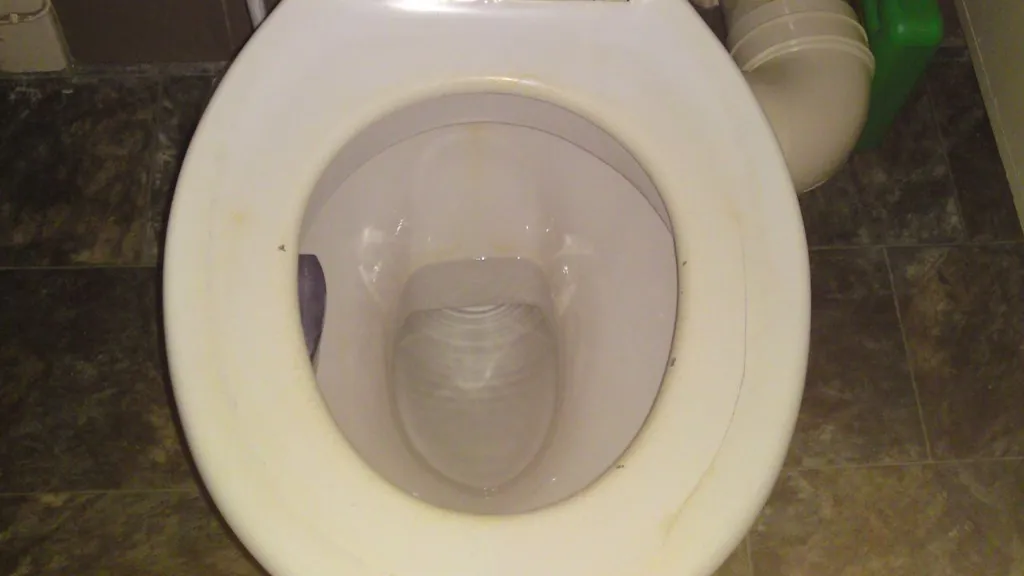
Tiny Air Bubbles In The Toilet Bowl (4 Tips To Fix)
There are also some common reasons for tiny air bubbles in water, except the main reason. Here, we have listed all the possible causes of bubbling, how to easily detect your toilet bubbling problem among all causes, and how to fix it.
1. Clogged Toilet

If you notice your toilet is gurgling or bubbling after flushing, the chances are high that the toilet S-trap or drain line is somehow clogged. As a result, air will fill up the space which isn’t blocked. So when you flush, water wants to go down through that space, and air mixes with water. At that time, water will slowly go down, and air pressure will come up, forming tiny bubbles.
Moreover, if you can hear gurgling sounds beside bubbles, it is a sign of a significant clogging problem that turns severe unless you fix it soon.
How To Determine It’s The Reason
There are many reasons for toilet drain line clogging. So it’ll be a laborious job to determine if your toilet’s tiny bubbles are forming due to clogged toilets unless you handle it wisely. However, here is a list of how you can easily determine whether the bubbling problem is because of blocking the toilet or for other reasons.
- Remember, if you or your kid flush any solid objects (undissolved toilet paper, wet wipes, famine products, cigarette butts, sediment, sand, brush, comb, kid’s toys, etc.) except human wastage.
- A thumb rule of general sewer maintenance is at least once a year. Try to remember, when you last cleaned your toilet drain line, septic system, or sewer pipe as a part of regular maintenance.
- American toilets are narrower than other modern toilets. So if you have one of those toilets, it can be easily clogged.
- If you have an older model low flowing toilet, it may be clogged frequently.
So, now consider all four seasons, and find out whether any one of them matches with you or not. If anyone matches, that is probably the reason for clogging and bubbling your toilet. And if no one fits, it indicates the bubbling problem is for another reason. So ignore the toilet clogging issue, and check the following reasons.
How To Fix
There are multiple methods and equipment for unclogging your toilet. Some are comparatively easy to follow, and some are not.
The way you should follow will depend on the condition of your clogged toilet. As we don’t know your toilet condition, that’s why here we demonstrate 3 methods in a series of minor to major clogging problem solvers.
Method 1: Use white vinegar and baking soda (For light clogging)
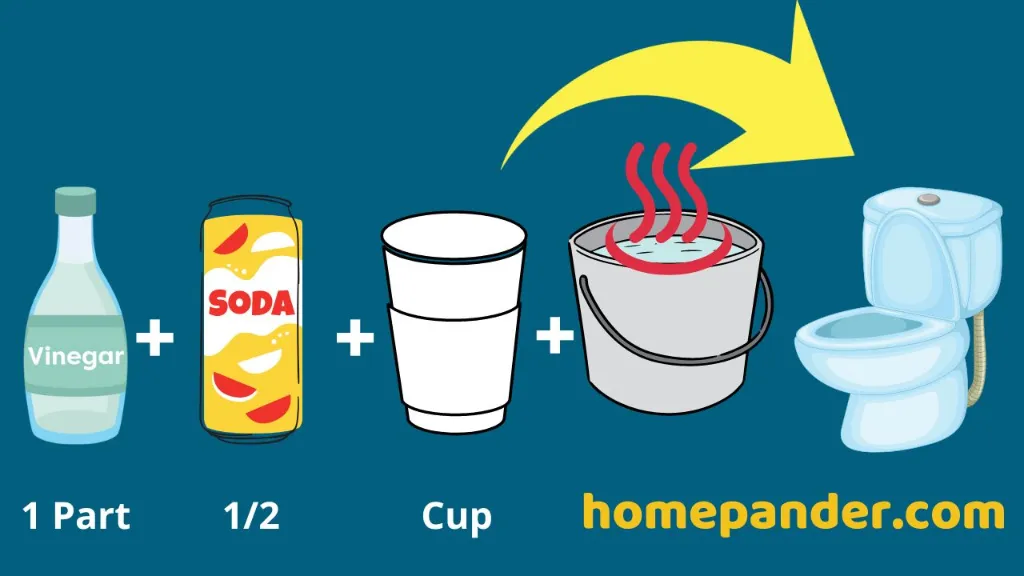
If your toilet is slightly clogged due to undissolved toilet paper, white vinegar and baking soda treatment will be the best to unclog it.
The Things You’ll Need
- 1 part white vinegar
- ½ part baking soda
- A disposable plastic cup
- 1 bucket of hot water
Project Overview
- Estimated Cost- $0
- Required Time- 1.15 hours
- Skill Level- Beginner
Process
- Mix white vinegar and baking soda in the cup.
- Pour the mixture into the toilet bowl and keep it resting for one hour to dissolve the clogged waste.
- Now, pour hot water (not boiling or extreme) into the toilet bowl and push the flush lever.
- Flush your toilet repeatedly 2-3 times to drain down the dissolved clogged particles through the drain line.
Method 2: Use a toilet plunger (For heavy clogging)
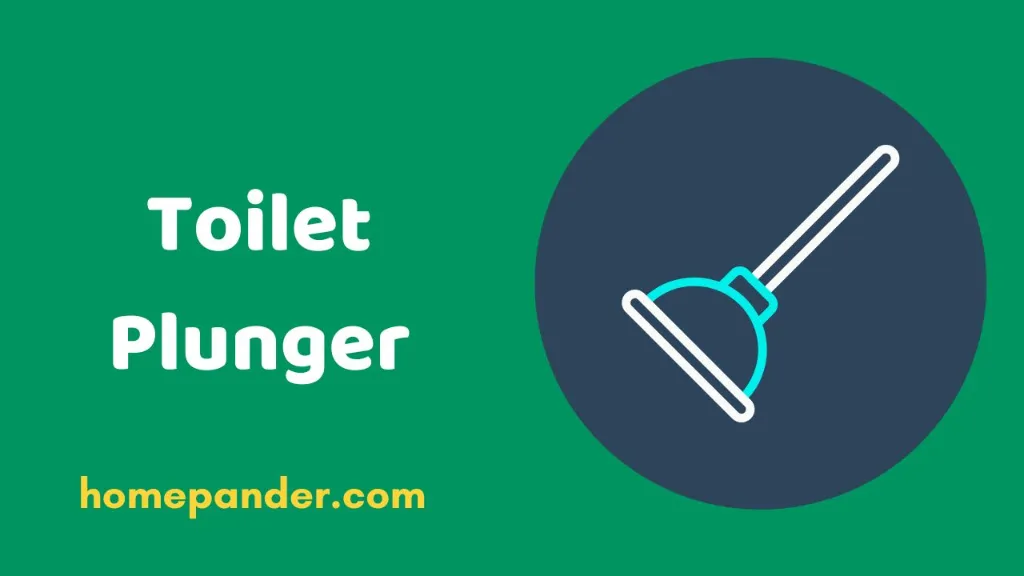
If home products won’t work for you, it’s better to use a toilet plunger. Because it is a toilet cleaning tool designed to dissolve clogged waste through its one-end suction cup.
Since its opposite end has a wooden rod to hold, you can quickly force pressure on the suction cup.
The Things You’ll Need
- Rubber hand gloves
- A mask
- A plunger
Project Overview
- Estimated Cost- $25
- Required Time- 10 minutes
- Skill Level- Beginner
Process
- Wear rubber hand gloves and a mask to keep yourself safe from getting in touch with waste or inhaling.
- Place the plunger suction cup into the toilet outhole by holding its rod handle.
- Push it forcefully to reach the clogged waste and break it down.
- Flush the toilet to drain the dissolved waste.
- Push the plunger again and try to understand if there are more clogged particles you feel in the suction cup or not.
- If not, flush your toilet and notice the drained water flow pressure.
If the water can drain instantly, congratulations, your attempt is successful. But if not, maybe there is more solid waste, like kid’s toys or combs. So it needs to pull out instead of dissolving.
Method 3: Use a toilet auger (For pulling out the waste)
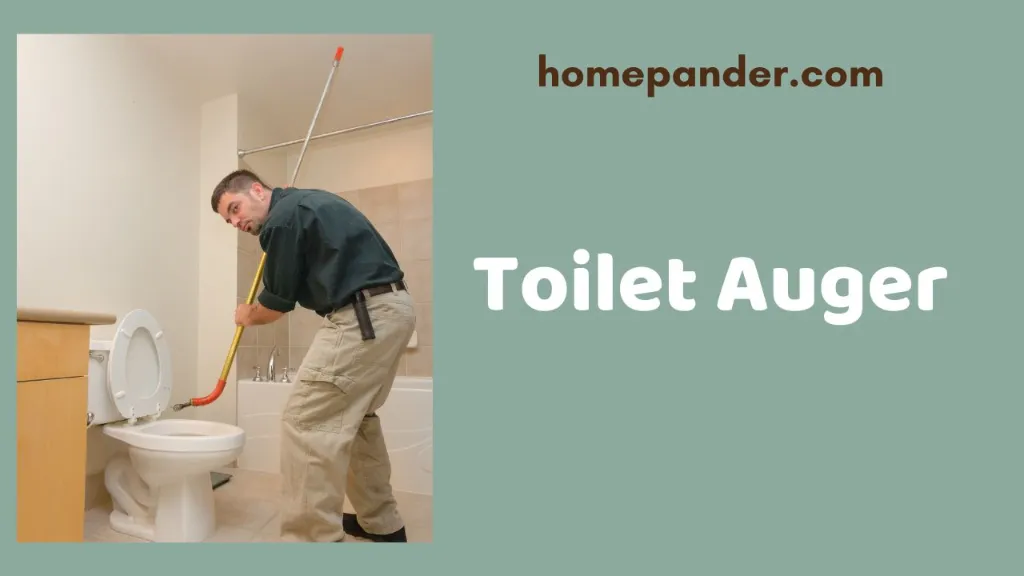
If a more solid object won’t dissolve, this is the last method of unclogging your toilet. A snake or auger is designed to pull out the waste from the toilet drain line to unclog it.
The Things You’ll Need
- An auger
Project Overview
- Estimated Cost- $40
- Required Time- 10 minutes
- Skill Level- Beginner
Process
- Grabbing the handle of the toilet auger, gently insert its cable into the toilet bowl. You should try to reach it closer to the clogged stack.
- Now, slowly crank the handle to work the cable into the toilet drain line. If you do it forcefully, the cable may double back toward itself; instead of moving through the drain.
- Reverse the cranking direction a few times to change its motion to get better results.
- Once the auger cable reaches the stack particles and tightly holds. You should reverse the handle rotation to extract the cable to pull it out from the toilet.
- Flush the toilet several times to ensure there is no clogged waste in the toilet drain line.
2. A Faulty Toilet Tank

The toilet tank supplies water to flush the toilet bowl. If the tank is faulty, broken, or malfunctioning, it may be the culprit of creating bubbles because of air presence.
How To Determine It’s The Reason
- If there are bubbles in the tank water, the tank may create bubbles accompanied by ghost flushing. Basically, it happens due to a loose hose pipe connection.
- Check your toilet flapper to see whether it ensures an airtight seal to the toilet flushing pipe when it doesn’t flush water or not. For example, if the flapper has a hairline open space, the air can insert into the line and create bubbles.
- If your toilet tank seal wasn’t correctly installed, it could also create bubbles for air presence.
- If your toilet or home is 20+ years old, the older version of the house or toilet can be the reason for bubbling.
Check all the things, and detect if any one of these is the reason for bubbling or not. If yes, check the how to fix section. But if not, go to the next reason.
How To Fix
As there are 4 different reasons for faulty tanks to create bubbles in the water. So the solution should depend on the reason. Because any specific solution won’t fit for all reasons.
Method 1: Tightening main water hose pipe
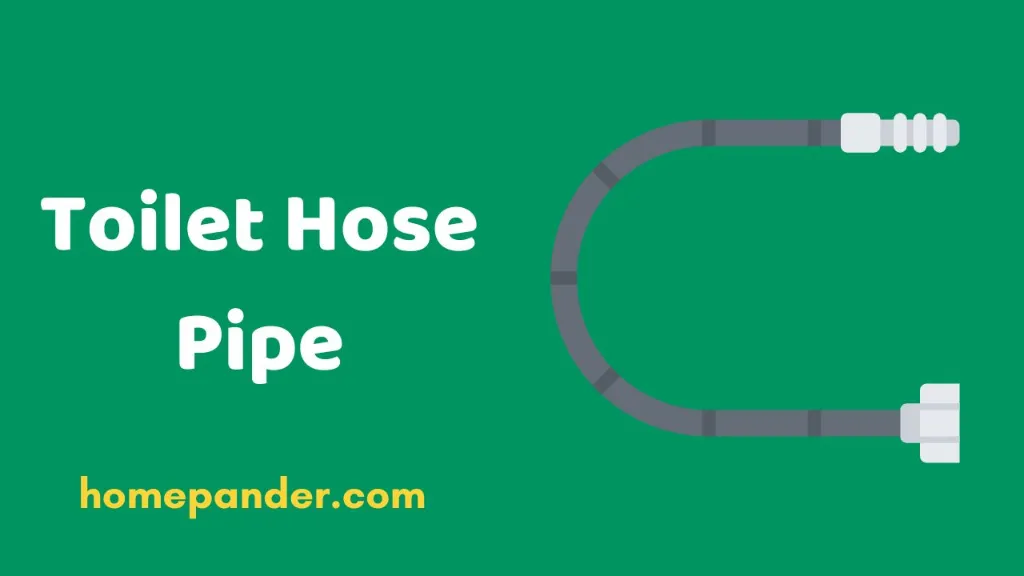
You can fix the issue by tightening the hose pipe, and it’s very easy.
The Things You’ll Need
- An adjustable wrench
Project Overview
- Estimated Cost- $0
- Required Time- 5 minutes
- Skill Level- Beginner
Process
- Attach the wrench with the hose pipe and turn it clockwise until you feel that it reaches its tightest position.
- Don’t put too much pressure when tightening, as it can scratch your toilet tank.
Method 2: Replacing toilet flapper
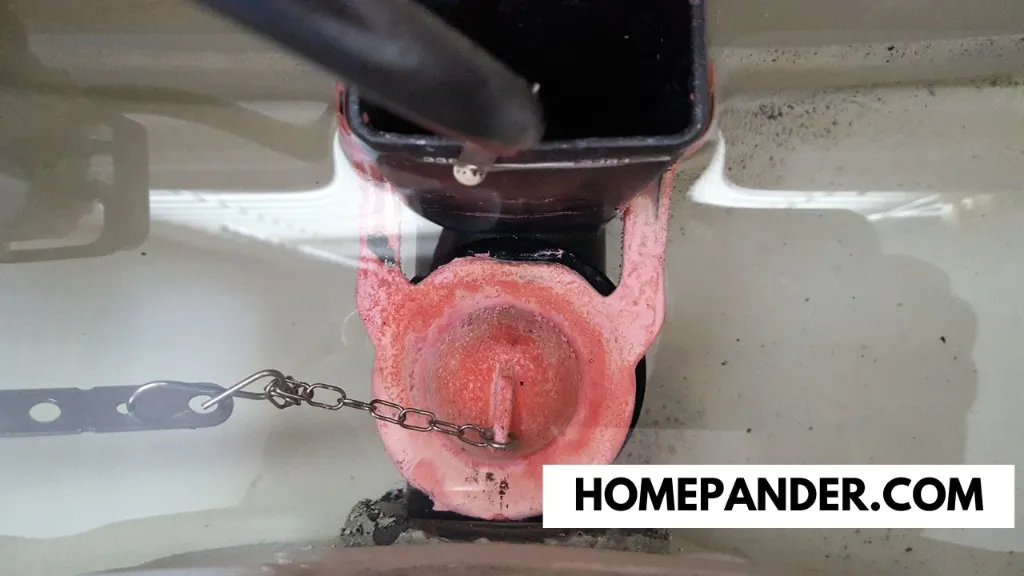
Toilet flapper replacement is the best practice to stop bubbling if that is for a damaged flapper
The Things You’ll Need
- A flapper
- A disposable waste bag
Project Overview
- Estimated Cost- $10
- Required Time- 20 minutes
- Skill Level- Beginner
Process
- Turn off the toilet tank’s primary water supply source by shutting off the valve.
- Flush the toilet to drain the tank’s water.
- Remove the toilet tank lid and keep it in a safe place.
- Remove clips and the flapper chain that will hold it in place.
- Now remove the toilet flapper and keep it in the waste bag.
- Install the new flapper in the right place by attaching it with the clips and flapper chain.
- Adjust the flapper chain to the right length to easily move the flapper when pushing the flush lever.
- Turn on the water source and check the new flapper by flushing the toilet to see if the flapper correctly works or not
- If that is ok, reset the toilet tank lid.
Method 3: Resealing the toilet

You have to reseal the toilet tank with waterproof silicone caulk to properly install and seal the space from where air can enter.
The Things You’ll Need
- A silicone caulk
Project Overview
- Estimated Cost- $20
- Required Time- 30 minutes
- Skill Level- Beginner
Process
- Open the caulk cap and apply it to the toilet tank installation space by ensuring there is no space from where air can pass.
- Wait 20-30 minutes to dry and if you want to apply a double layer, apply caulk again.
- Wait 24 hours to completely dry and be usable.
Method 4: Replacing the entire toilet

If your toilet is more than 20 years older, you have to replace the entire toilet, except the tank. Because the cost that you have to spend for replacing the toilet tank won’t be worth it. However, replacing the toilet bowl and tank isn’t a DIY job, so you have to appoint a professional plumber for this task.
3. The Blocked Vent Stack
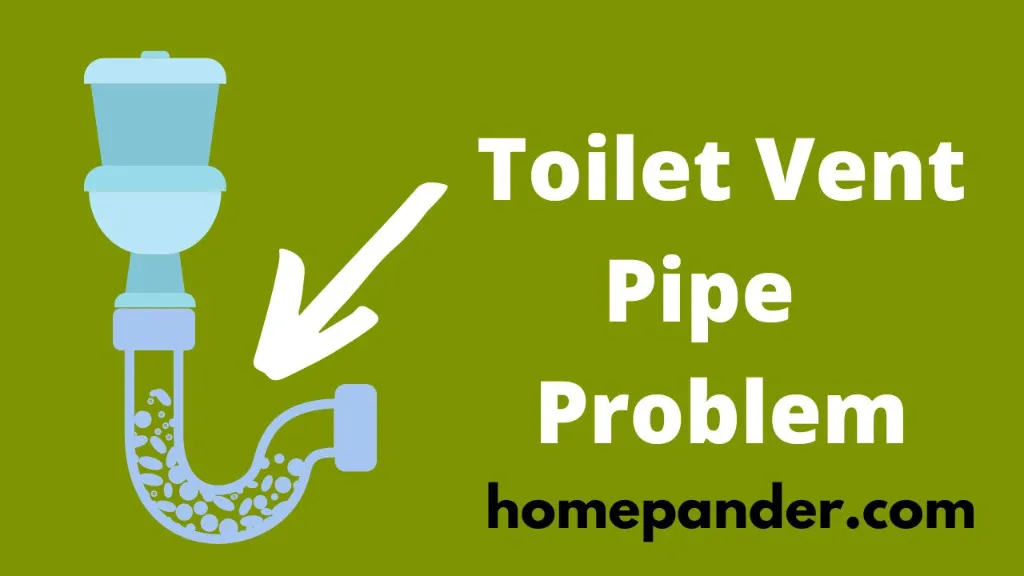
Every toilet has a vent pipe that goes to the roof of the house to pass sewer gas in the open space. When the vent is clear, the sewer gas can easily pass. But as long as the vent is blocked, the air pressure will fill up the pipes and force the gas back into the toilet. That’s why when flushing, you may see small air bubbles in the toilet bowl.
How To Determine It’s The Reason
Since most of the vent pipes remain open, they may be blocked because of different kinds of debris. In addition, vent pipes are one of the birds’ most preferable places to make their nest. So they bring dry leaves, short straws, and tree branches. All of these will block the vent. Also, rodents or dead birds can also be the culprits of clogged vent pipe.
- First, take your mobile and get on the roof. Turn on its flashlight and hold it towards the vent pipe and check whether it is clogged or not.
- If you can’t see long distances with the flashlight, capturing multiple photos with its flashing lights is a good idea to inspect the clog.
How To Fix
There are many ways to remove the vent pipe blockage to ensure smooth airflow and get rid of air bubbles. However, if the clog is within 8-10 feet of the top of the pipe, there are 2 methods to unclog it.
Method – 1 Using a straightened-out wire coat hanger
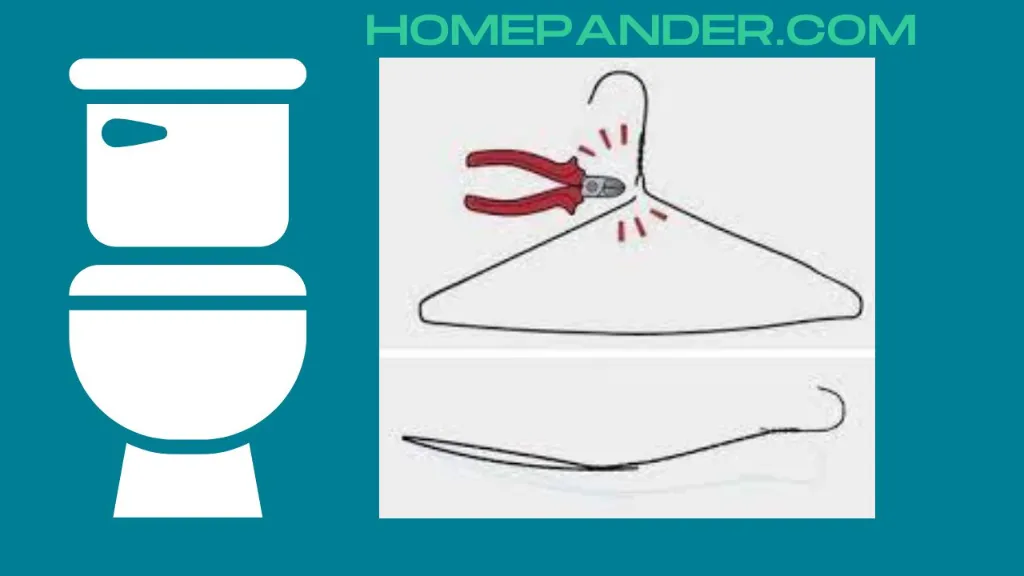
A hanger is one of the basic tools to keep your coat organized. Moreover, it is the easiest option to unclog your toilet vent stack.
The Things You’ll Need
- A coat hanger
Project Overview
- Estimated Cost- $0
- Required Time- 20 minutes
- Skill Level- Beginner
Process
- Straighten a typical coat hanger by creating a hook shape at the one end of the hanger.
- Now, grab the opposite end of the hanger, and slowly push the hook end to the vent pipe.
- Try to hook the blockage debris and once it is caught, gently pull the hanger towards you to pull out the waste.
- Never push the hanger downwards, as it can move the debris further down the drain.
Method – 2 Using a toilet auger
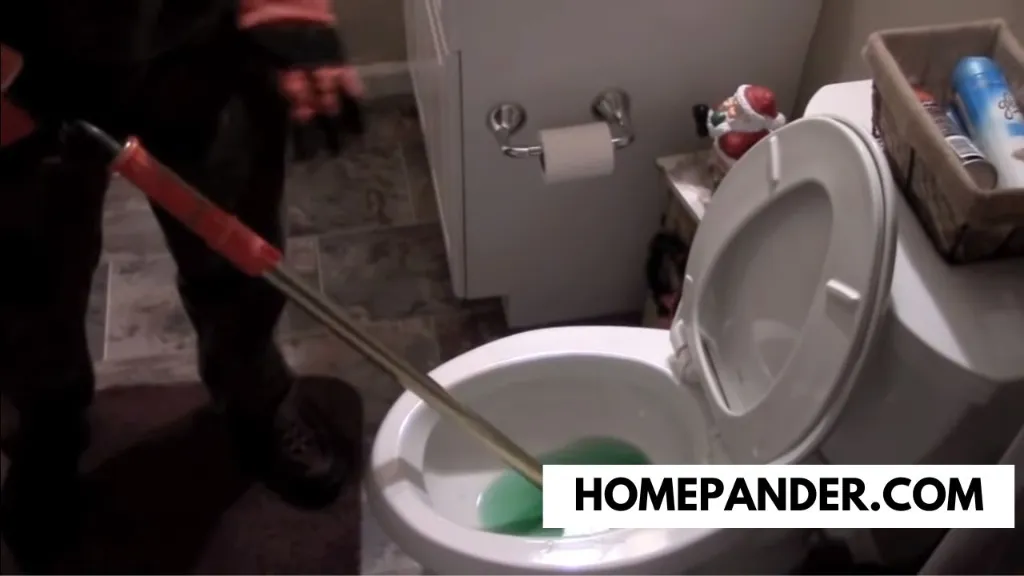
If you find using a coat hanger tough, or you can’t reach the blockage with it, there is another simple option for you. And that is using your toilet auger. It is also a zero-cost method, as most probably you already have a toilet auger to clean your clogging toilet.
The Things You’ll Need
- A toilet auger
Project Overview
- Estimated Cost- $0
- Required Time- 20 minutes
- Skill Level- Beginner
Process
- The auger-using technique is the same as how you unclog your toilet. As above, we describe the process; there is no need to discuss it again.
If the clog is deeper than 8-10 feet and out of your reach with a toilet auger, there are also two methods to remove the blockage.
Method – 3 Running water into the pipe
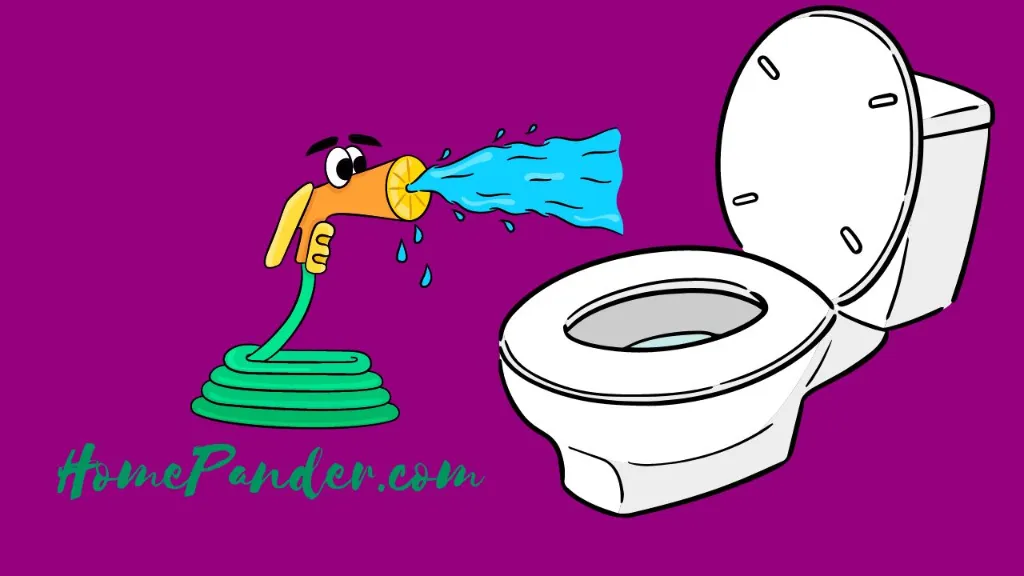
The heavy water flow can dissolve the waste that clogs the vent pipe. So if you run water into the pipe, it may solve the issue.
The Things You’ll Need
- A garden hose pipe
Project Overview
- Estimated Cost- $0
- Required Time- 20 minutes
- Skill Level- Beginner
Process
- Bring your garden hose pipe to the roof, and with the help of it, run a heavy flow of water in the vent hole.
- If the blockage is minor, that will be dislodged because of the heavy water pressure.
Method – 4 Call a professional plumber
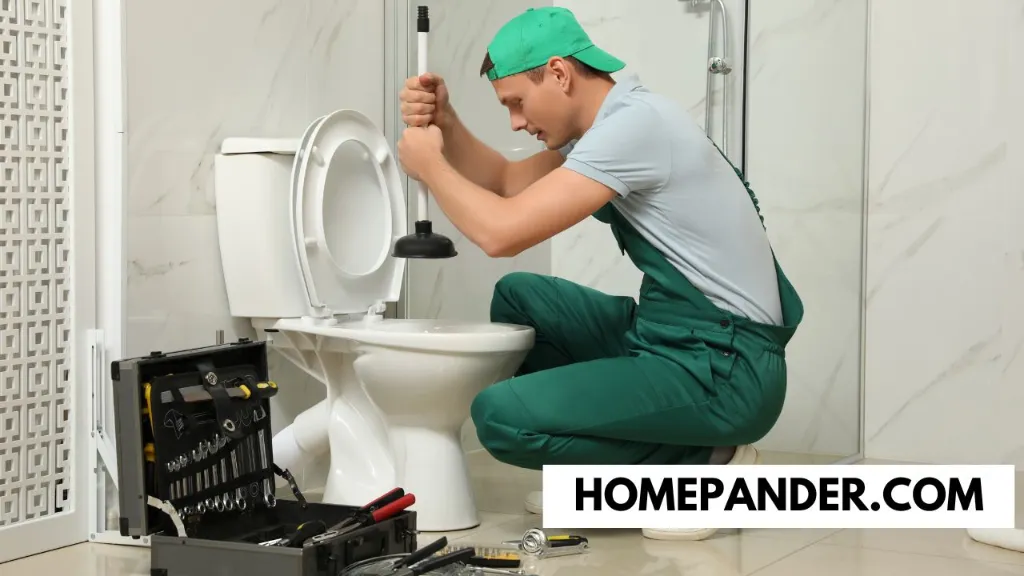
If the running water method fails to dislodge the blockage, there is no option of seeking help from a plumber. However, you have to call license plumbers to get quality service.
4. Blockage Sewer Line
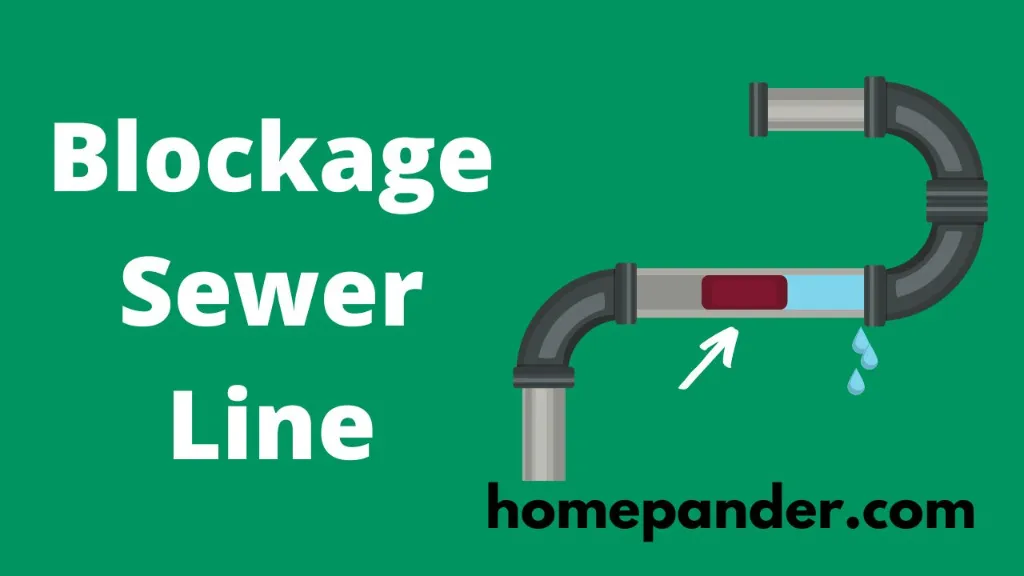
Your home’s bathroom (toilet, shower, bathtub), kitchen sink, dining basin, and other water lines share a common pipe to drain water to the main sewer tank. If you notice, the toilet is bubbling itself while it isn’t being used, but the shower is running. It indicates something is wrong, or the sewer pipe is clogged. So it affects all the sewer lines and causes bubbles.
How To Determine It’s The Reason
There are various possible reasons why the sewer line can be clogged.
- Generally, the pipes are clogged if you flush solid waste or due to kitchen sticky grease, and oil.
- When municipal crews do maintenance, soil or sand can insert or remain in the sewer line and clog.
- Tree roots can insert the sewer pipe due to earthquakes, or weather changes can also block the sewer line. (The minor possibility)
Ask your neighbours whether they are experiencing a water bubbling problem in their toilets or not. If their toilet also creates bubbles or sound gurgling; it’s a sewer line or outdoor clogging problem.
How To Fix
As the sewerage system is interconnected with community drain lines and shared pipes with your neighbours, you can’t do anything personally. Which means it is a plumbing disaster. You can report the problem to the proper authorities responsible for taking care of it and fixing the clog.
5. A Water Main Line Issue

If your water supplying company supplies water that is added with more dissolved carbon dioxide (CO2) to your water. Tiny bubbles can be formed due to CO2 outgas when water releases at lower pressure.
How To Determine It’s The Reason
Typically, surface water contains not more than 10 ppm of free CO2. If your water source has 10+ ppm free CO2, it may be the reason for bubbling. You can use a CO2 meter to diagnose water’s carbon dioxide level.
How To Fix
The only solution to fixing this issue is to reduce water pollution from your water supply source. As there is nothing to do for you alone, you must consult your water supply company to get an instant result.
In the long run, you should reduce water pollution from the environment. But it’s a big challenge and not a single-person task. So, alone you can’t solve the issue, but be a part. So, always keep in mind water pollution consequences every day at your every activity. That’s all.
How To Prevent Your Toilet From Gurgling Or Bubbling
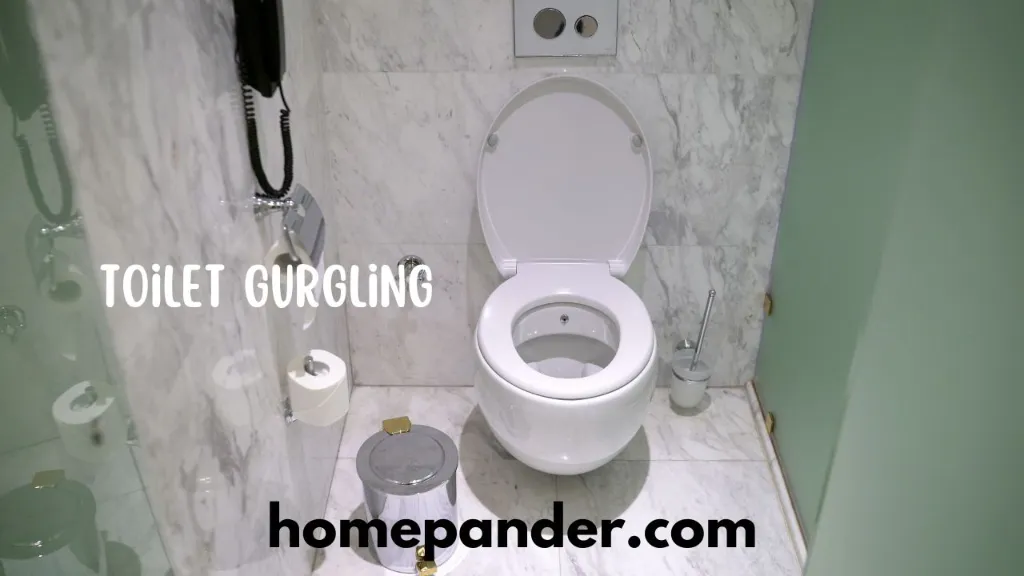
There is some routine maintenance to prevent toilet bubbling or gurgling. Let’s have a look at those ways.
- Never flush anything solid in the toilet. Flush the toilet every time you use it. So the toilet won’t get any chance to be clogged and create air bubbles.
- Focus on cleaning your toilet once a week with vinegar and baking soda. It’ll help you to keep your toilet clean and clog-free.
- Don’t use the toilet bowl cleaner to clean the shower.
- Use a perforated plastic cover on the vent stack top to avoid blockage. As the cap has multiple holes, sewer gas can get out, but the solid objects won’t fall in the pipe.
- You have to schedule a professional plumber’s yearly inspection of your sewerage system to avoid any significant clogging issues.
With these practices, you’re less likely to face a situation where your toilet is clogged and emits bubbles.
Pro Tips To Reduce Water Bubbles Fixing Cost
If your toilet is bubbling due to your bathroom, vent stack, or sewer line clogging, and you need a professional plumber’s help, there are various cost ranges. Such as
- Simple clog costs you $100 to $275
- Complex clog costs you $150 to $500
- Severe clogging that requires a Hydro Jetting machine costs you $250 to $800
- If you rent a drain snake and do the task yourself, the rental fee will be $30 to $80 per day.
Since the cost is huge, now we talk about a more economical solution for your convenience. If you have some DIY skills and time, then there is no need to spend this massive amount to fix this toilet bubbling issue.
Many motorized model sewer snakes are available, which can reach 100+ feet and are easy to use. So it’s wise to buy one of the best-motorized drain augers to use it many times instead of taking a one-time plumbing service from plumbers.
Vevor Electric Drain Auger
The Vevor Electric Drain Auger is made with premium quality steel core cable. Now you may wonder why we have chosen this one when there are multiple options in the market. Here are the reasons
A Quick Note Of What Benefits You Enjoy With This Machine Against Plumber’s Cost
- Its cable can easily go down into the crooked pipes to clear the blocked debris.
- Its motor is foot operated, so you can use both hands to unclog the drain lines.
- The 250W motor will rotate at the speed of 1700 RPM to control the cable with less effort.
- It is completely harmless for all plumbing fixtures, including powder-coated pipes.
- It comes with four different cutters (C-Cutter, Spade Cutter, Arrow Cutter, and Boring Bulb Cutter.) However, it is designed to quickly connect or disconnect the cutters for efficient use. So it minimizes your DIY unclogging task time, which is pleasant.
- It is attached with a ground fault circuit interrupter (GFCI) to protect you from electrical shock and ensure your utmost safety.
- There is a handle to transport it from place to place, which makes it easily portable.
- The small tool tray helps you to keep all the tools organized to get them in your hand when needed.
- Multiple uses of cleaning sink, toilet, shower, floor, and garden drain.
- Now, let’s talk about the price. It is available for less than $225 on Amazon.
Considering its long-term advantages over a one-time plumbing charge, it’s worth having this tool.
Related Questions
[faq-schema id=”10582″]
Conclusion
Hopefully, you enjoyed reading this comprehensive guide on why tiny air bubbles are in the toilet bowl and how to fix it.
It isn’t a good practice to delay taking action on your bubbling or gurgling toilet as it may lead to more extensive damages that require more money and time to repair.
As most of the bubbling fixing methods need less cost and time; there is no reason to keep the problem alive.




![How to Remove Crystallized Urine [Explained]](https://homepander.com/wp-content/uploads/2022/02/How-To-Remove-Crystallized-Urine.jpg)


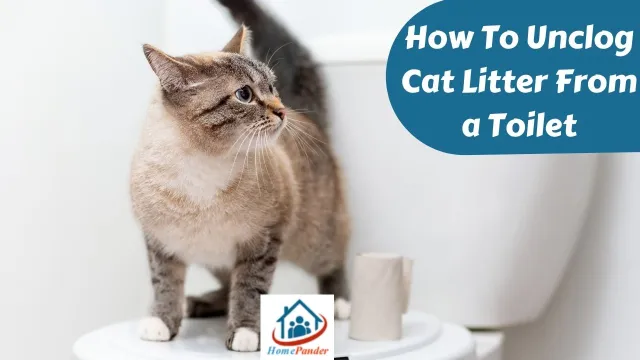
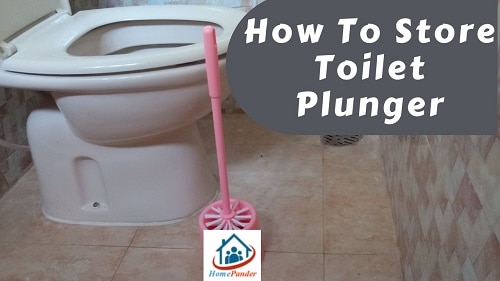
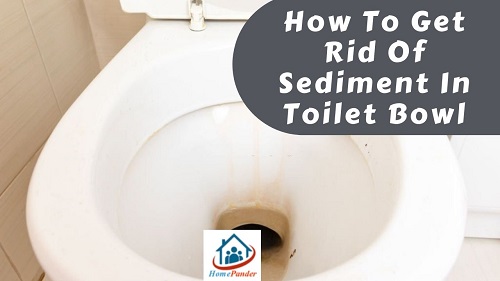
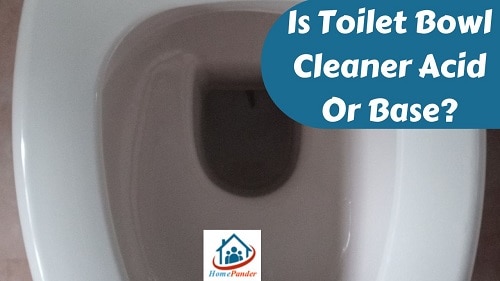
![How To Clean Dark Grout That Has Turned White [5 Easy Ways]](https://homepander.com/wp-content/uploads/2021/12/How-To-Clean-Dark-Grout-That-Has-Turned-White.webp)